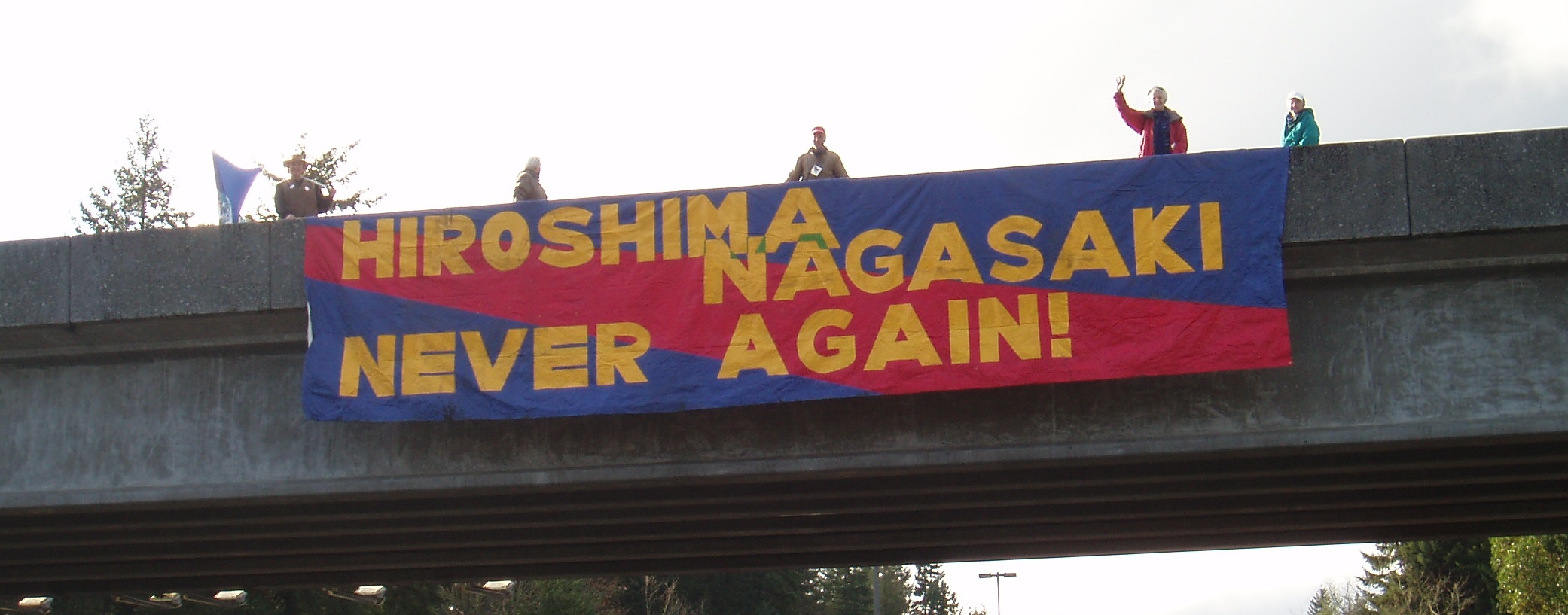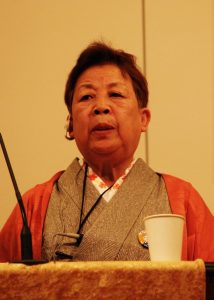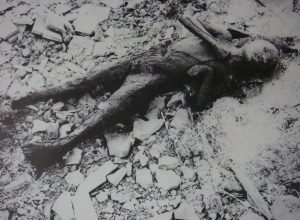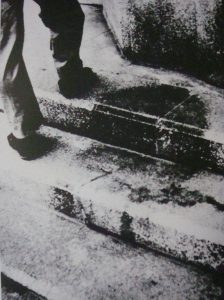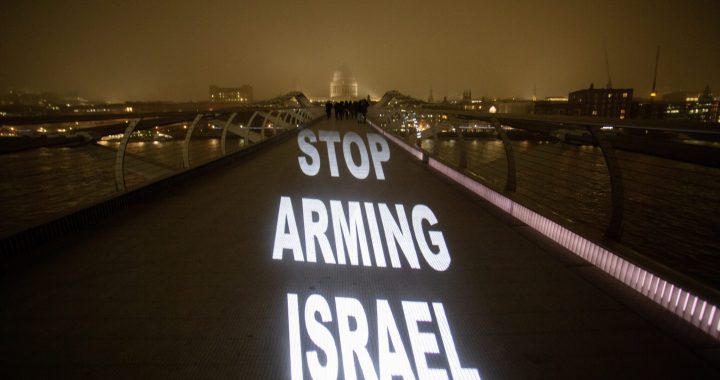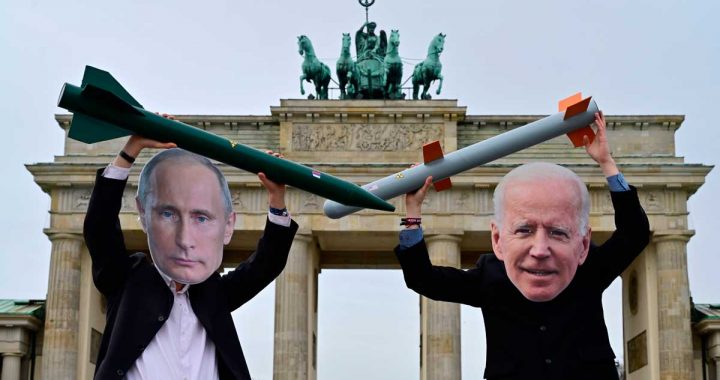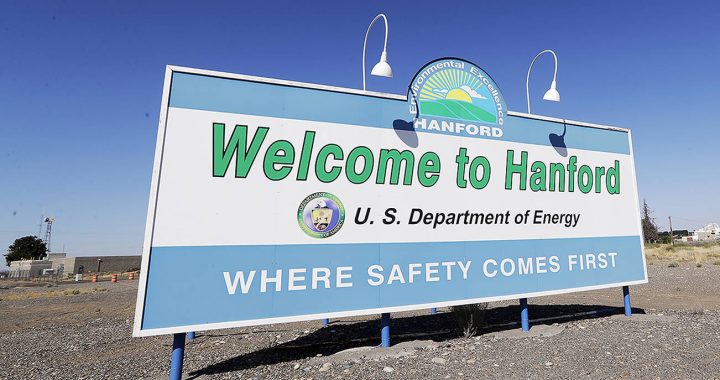Humanity stands at a crossroads. Nearly 75 years since the United States dropped two nuclear weapons on the people of Japan, we continue to worship the false idols of the nuclear age. We do so at all of humanity’s peril. The nuclear priests continue to practice their alchemy, working from the same, outdated bible created by men during the prehistory of the nuclear age. The mythos created out of this espouses the doctrine of deterrence, and is unable (or unwilling) to hear the voices of suffering they have brought on countless human beings. Furthermore, as a result of their separation, they cannot fathom the suffering they threaten to bring on humanity with a pending nuclear war.
The Hibakusha, survivors of either of the atomic bombings of Hiroshima or Nagasaki in 1945, suffered the direct and indirect effects of those horrific events, as have generations of their offspring and others affected by nuclear weapons production and testing.
A delegation representing the Japan Council against Atomic and Hydrogen Bombs (Gensuikyo) visited Seattle in 2010 after the Non-Proliferation Treaty Review Conference at the United Nations. During their visit, on May 5, 2010, Tokie Mizuno, a Hibakusha of Hiroshima, delivered testimony of her experience on August 6, 1945, along with a plea for the abolition of nuclear weapons.
Tokie Mizuno’s acts of remembering and sharing preserves her personal story and makes a plea for us all to find our common humanity and work for peace. Ms. MIZUNO represents all Hibakusha in saying, “No more Hiroshimas, No more Nagasakis!” Those who gathered to hear her testimony were witnesses to the horrors of nuclear war, and as you read her testimony below you will become a witness to her experience and plea.
The voices of the Hibakusha are fading as they pass from this Earth. Fortunately, many of their stories have been recorded so that future generations may hear them.
It is my deepest hope that we will all share her story far and wide, spreading her message, and the message of the Japan Council against Atomic and Hydrogen Bombs (GENSUIKYO). That would be the greatest thanks we could give Ms. MIZUNO and the delegation for honoring us with their visit to Seattle in 2010.
***
My name is Tokie MIZUNO and I am a survivor of Hiroshima. 65 years ago, when I was 5 years old, the atomic bomb was dropped on my city, Hiroshima. I was near my grandmother’s house, 1.2 kilometers from ground zero.
The City of Hiroshima was completely destroyed and was turned into rubble by the enormous destructive power of the atomic bomb. As other survivors, I was barely alive and the damage on my body and mind was unbearable.
I might have been lucky to survive but life hasn’t been easy on me financially, physically and mentally. This agony should not be repeated on anybody else on earth. That’s why I have become involved in anti-nuclear actions with other Hibakusha as well as many other Japanese people.
We have been collecting signatures for a nuclear-weapon-free world, and engaging in activities to defend the Japanese Constitution, especially the Preamble and Article 9, which pledges never to wage war again.
Article 9 of the Japanese Constitution clearly states “the Japanese people forever renounce war as a sovereign right of the nation and the threat of use of force as means of settling international disputes.”
And it adds “In order to accomplish the aim of the preceding paragraph, land, sea, and air forces, as well as other war potential, will never be maintained.” Article 9 is our treasure.
This treasure for Japan was achieved with the sacrifice of precious lives of 20 to 30 million people in Asia and Pacific. This is one of the greatest achievements for the world, too, and we will hold on to it forever.
Let me talk about that day…….
On the morning of August 6th, 1945, just before Hiroshima was hit by the atomic bombing, one of the women in my neighbourhood came to my house and said “We have some sweets. Why don’t you come and have some?”
So my little 3-year-old brother and I happily followed her. In those days it was very difficult to have sweets. My neighbour’s son, a soldier, was back from the battlefront to treat his wounds. He brought some sweets with him for his family and the neighbour invited us in.
We were about to eat our sweets when the bomb exploded.
With a blinding flash, the whole house was flattened.
I found myself trapped under the rubble. I tried to look out from my little prison and saw my younger brother, rescued by a soldier, standing there with blood on his face and head.
I myself was pulled out of the rubble. My right arm was heavily injured and I had several cuts on my face. My neighbour tore her underwear into pieces and covered my arm to stop it bleeding. Later I was told that it was her treatment that saved my right arm.
I don’t remember how many hours had passed, but I saw my mother crawling to me over piles of rubble. She was desperately looking for me and my younger brother. She looked awful with only tattered patches of her clothing on her body and her hair standing on end.
My 12-month-old baby brother was still buried under the rubble. My mother and grandmother were desperate and were removing the debris saying they should get him back home, even if he was dead.
They also called out for help to people walking by but nobody stopped. They went on their way absentmindedly – they were like ghosts.
We saw flames in the distance coming towards us. Terrified, my younger brother and I were both crying. I don’t remember the pain of my injury, but many collapsed houses around us horrified me, although my father thought I was just stunned.
Fortunately, my baby brother was alive, and we managed to escape to a raft on the river. There were countless dead bodies floating and fire balls were falling all around. Red-hot galvanized plates darted towards us and made a huge noise when they dropped into the river. It was not a safe place to be.
At that time I was so young that I don’t remember exactly what happened. But my deceased parents and grandmother told me a lot about that day.
There was a woman on the raft who gave us food and water. She also gave my mother part of a Kimono to use as bandages and as a strap to carry me on her back.
In the evening, cooling our bodies with river water, we finally found a place to evacuate to. It was a shrine near a railway station called Koi.
Because my grandmother and I were seriously injured, we two were left at the shrine while my mother and brothers escaped to my aunt’s house in Itsukaichi City. My uncle who rushed to Hiroshima to search for us carried them on his handcart.
Grandmother thought we could have some treatment at the shrine but nothing was available. We were given only one rotten rice ball. We finally evacuated to my aunt’s house.
They were farmers and gave us good food. I had tomatoes, cucumbers, pickled shallots etc. to my heart’s content. It may be this diet that has kept me healthy.
My father had to spend several nights at shelters in Hiroshima. He died abruptly from TB in August 1956, which we believe was due to residual radiation. Later when I was working to collect survivors’ stories, I learned that there were many Hibakusha who suffered from TB during those difficult times.
My mother died in Oct. 1967. I believe that both of my parents were killed by the atomic bomb. At that time I thought that it was our fate and that because Japan was at war we couldn’t complain about it.
I also thought we were just unfortunate because we were in Hiroshima when the atomic bomb was dropped. Later I learned history, which completely changed my mind. I knew why the US had done it.
The US government has kept saying that the atomic bombing of Hiroshima and Nagasaki ended the war and saved millions of people’s lives. That’s what they teach at schools.
However, in 1944 there was scarcely any food left for Japanese people. People were dying from hunger. Japan’s ground and air forces and navy were almost completely destroyed. It was obvious that Japan was finished.
Nonetheless, 210,000 people were killed in Hiroshima and Nagasaki. Why?
In 1945 the war ended, but another war, the Cold War between the US and the Soviet Union had already started. The US wanted to have an advantage over the Soviet Union militarily and politically by showing the power of nuclear weapons. They also wanted to test their newly developed technology, atomic bombs.
Hiroshima and Nagasaki were chosen as testing grounds with real live people.
Let me share with you what the atomic bombing had done to us. The atomic bomb caused massive destruction and killed tens of thousands instantly and indiscriminately. It also emitted massive amounts of radiation which has afflicted us for decades.
Hibakusha describe the moment of the bombing as “The Sun dropped on us and burnt us”. When Bomb exploded, a huge fireball, 280 meters in diameter, was generated in the air.
Heat rays emitted from it raised the ground temperature, from 3000 to 4000 degrees Celsius (5500 to 7300 degrees Fahrenheit) near the hypocenter.
Within 1.2 kilo-meters of ground zero, those who were directly affected by the heat rays suffered terrible burns and their internal tissues and organs severely damaged. Most of them died instantly or within a few days.
The explosion also created a powerful blast and destroyed most of the wooden houses in 2-kilometer radius of ground zero. People were blown through the air and many crushed to death under collapsed buildings.
Radiation left the human body with serious damage. It penetrated deeply into our bodies, damaged cells and diminished the blood generation function of bone marrow.
It also damaged inner organs. Even those who looked uninjured later became ill and died.
Residual radiation left on the ground affected many long after the explosion. Those who entered the city to search for their families/friends or for relief operations eventually developed similar symptoms and died.
Nuclear weapons are unspeakable weapons. They don’t allow us to live nor die as humans. They are weapons of absolute evil which can never co-exist with human beings.
3.2 million Japanese people lost their lives in the Asia-Pacific War. 20 to 30 million people were victimized by the Japanese military in Asia.
Learning from it, we have acquired the war-renouncing Japanese Constitution. However, military spending in the world is growing. Trillions of dollars are being spent for military purposes. If used for peaceful purposes, this money could solve many problems for human-kind.
20th century war is gone. Our responsibility is to hand over a peaceful and cultivated 21st century to the next generation. I strongly believe that we can hand over a nuclear-weapon-free world to future generations if we work together in solidarity with the people of the U.S. and with the people of the world.
Thank you.
Editor’s Note: You may click here to download the original PDF booklet containing okie Mizuno’s testimony.

